Dow Extends Winning Streak, Tech Earnings Awaited, and Central Bank Meetings Loom | Daily Market Analysis

Key events:
- Canada - Manufacturing Sales (MoM)
- USA - S&P/CS HPI Composite - 20 n.s.a. (YoY) (May)
- USA - CB Consumer Confidence (Jul)
The Dow continued its winning streak on Monday, notching an impressive eleventh-straight gain, thanks to a surge in energy stocks. Investors remained optimistic as they absorbed the better-than-expected quarterly results from major tech companies and awaited the Federal Reserve's decision later in the week.
Likewise, the S&P 500 saw gains, with energy stocks leading the charge, and investors were still digesting the positive quarterly reports from prominent tech firms and eagerly anticipating the Federal Reserve's upcoming decision.
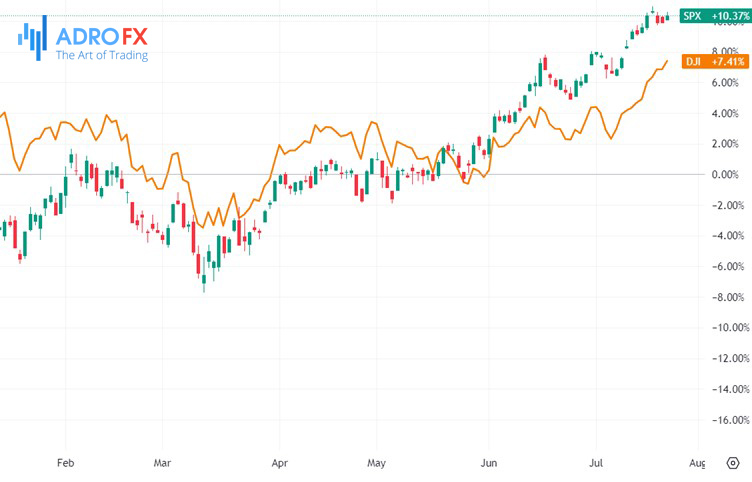
Big tech giants Alphabet (NASDAQ: GOOGL) and Microsoft (NASDAQ: MSFT) are scheduled to release their earnings after the market closes on Tuesday.
Last week, bullish bets on tech took a hit following slumps in Tesla (NASDAQ: TSLA) and Netflix (NASDAQ: NFLX).
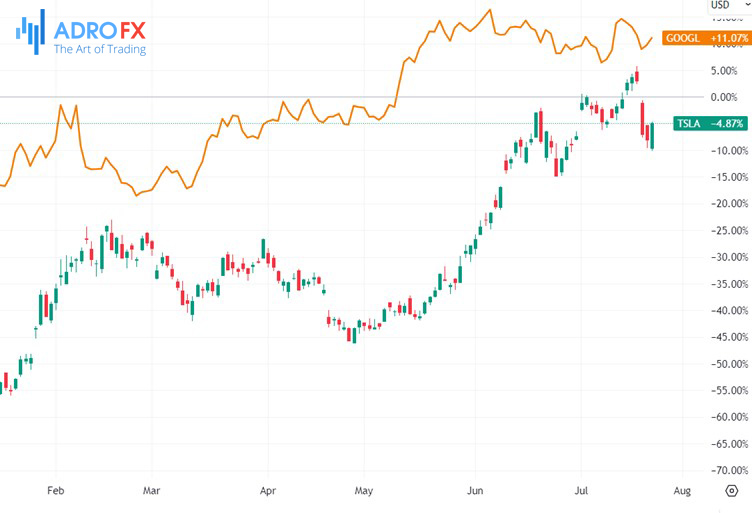
However, Wedbush analysts believe this week presents a different scenario, offering a positive outlook.
They highlighted several factors contributing to this optimism, including strong performance in cloud services, AI monetization, stabilization of digital advertising, and an environment of increased IT spending confidence. Based on these factors, the analysts see a compelling case for investing in tech stocks during the 2Q tech earnings season.
The US dollar demonstrated sustained strength during overnight trading, building on a significant rebound observed in the previous session. As a result, the USD/JPY pair rose above the 140.00 level once again.

This recent turnaround in the US dollar's weakness has been driven by a rise in US yields. In the past week, the 2-year US Treasury bond yield increased by just over 20bps as market participants revised their expectations regarding the extent of the Federal Reserve's rate cuts for the next year. However, the outlook for one final rate hike this month remained mostly unchanged.
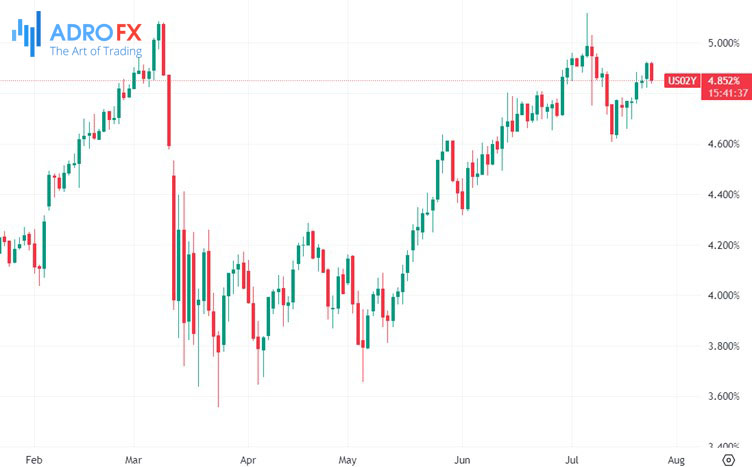
Despite encouraging economic data, the US dollar has experienced fresh year-to-date lows this month due to mounting evidence of slowing inflation in the country. The deceleration of inflation is a significant factor affecting the US dollar's weakness. As inflation slows down, the Federal Reserve gains confidence that current interest rates are appropriately restrictive. If inflation continues to approach the Fed's target level, it may provide room for rate reductions in the upcoming year. To sum up, the combination of lower US rates in response to slowing inflation and a softer landing for the US economy is anticipated to negatively impact the performance of the US dollar.
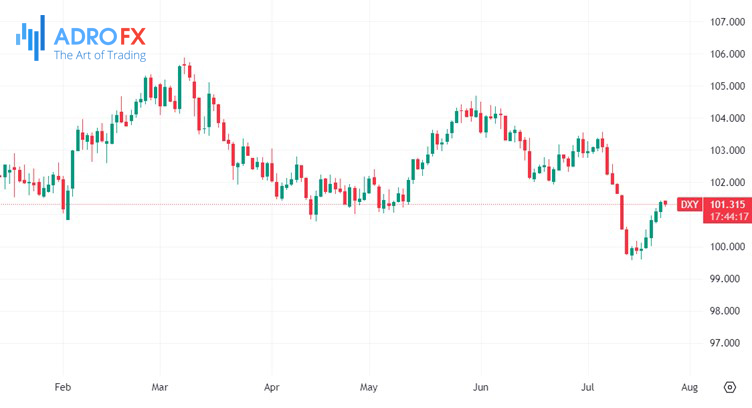
There are significant central bank meetings this week, with the Federal Reserve's meeting on Wednesday being the most noteworthy. Interest rates have reached or are very close to their peak levels, and it's possible that this week could witness the Fed and ECB announcing their final rate hike in their tightening cycles.
The PMI data provides insight into the global economic cooling trend. Inflation is also decreasing, mainly due to favorable base effects, falling energy prices, and slower growth in food costs.
Yesterday's PMI data from the eurozone, the UK, and the US all convey a similar message. Manufacturing sectors continue to face challenges, though the US performed better than expected. Meanwhile, expectations for growth in services are slowing. The surveys indicate clear indications of further economic cooling, reduced inflationary pressures, and weaker hiring trends.
Central banks may find some relief in the data, but it's unlikely to be enough for them to claim victory or explicitly announce the end of the tightening cycle. Policymakers will proceed with extreme caution, although they will be encouraged by the positive data observed over the last month or two.
Gold seems to be taking a momentary pause in anticipation of the upcoming Fed meeting on Wednesday. Recently, the yellow metal received a significant boost from positive economic data, nearly reaching the $2,000 mark at one point last week.
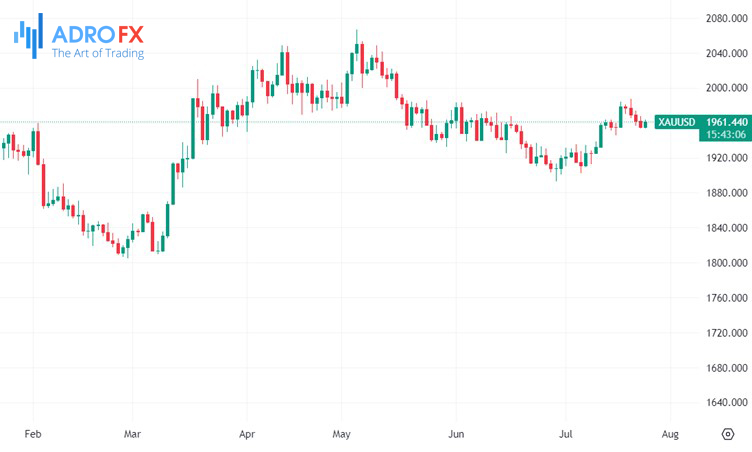
However, there has been some profit-taking since then, causing the price to pull back to around $1,960. These price fluctuations are challenging to interpret definitively.
The future trajectory of gold will largely depend on the Fed's decisions. Any clear indication that this will be the final rate hike or a surprising decision not to hike rates could lead to a bullish sentiment for gold, possibly pushing it to test the $2,000 level once again. A breakthrough above this psychological and technical barrier is a very bullish signal for the precious metal. Investors will closely watch the Fed's actions and statements for cues on how gold might behave in the coming days.









